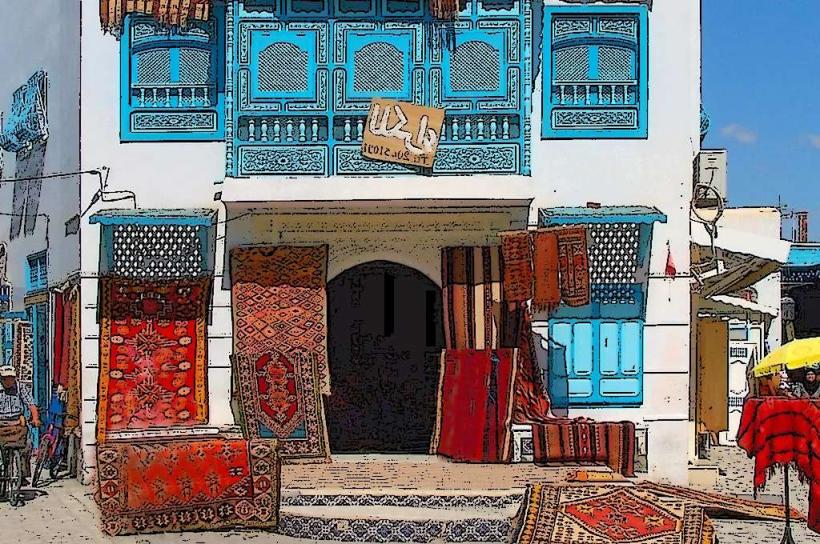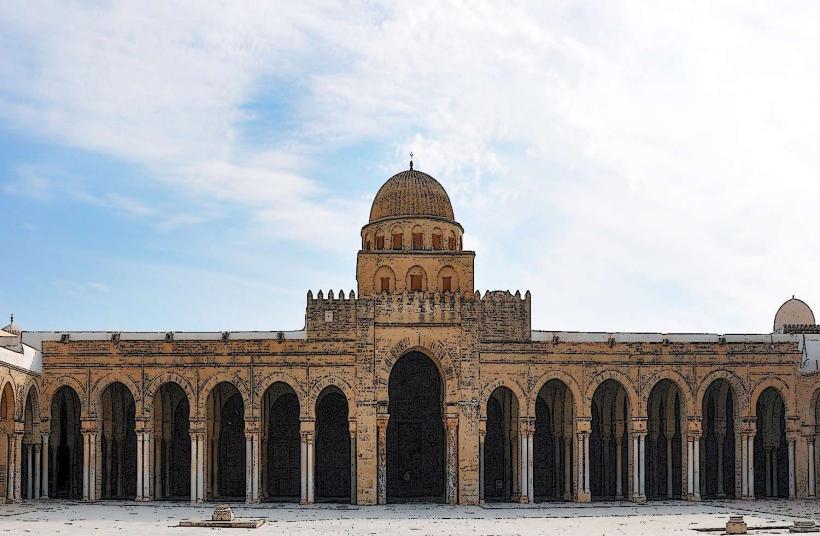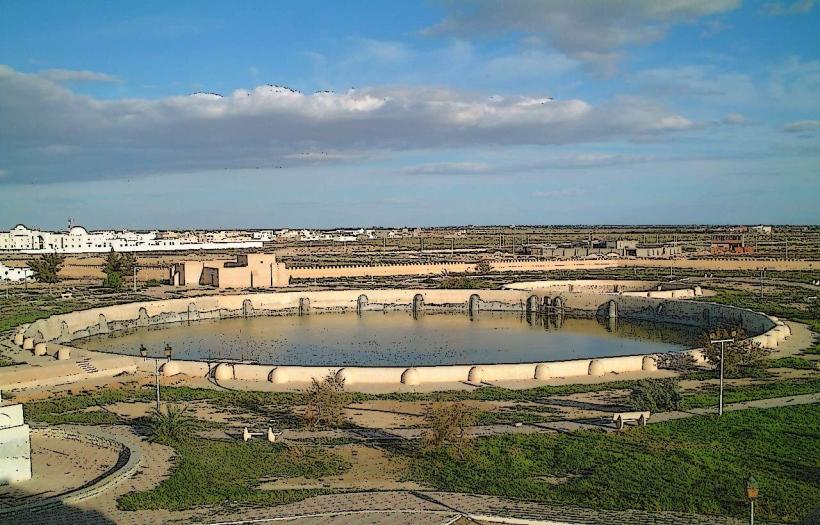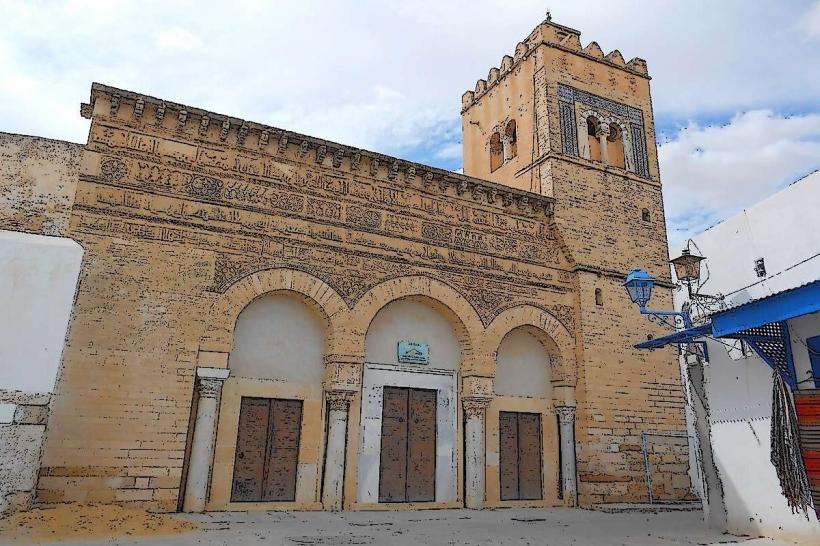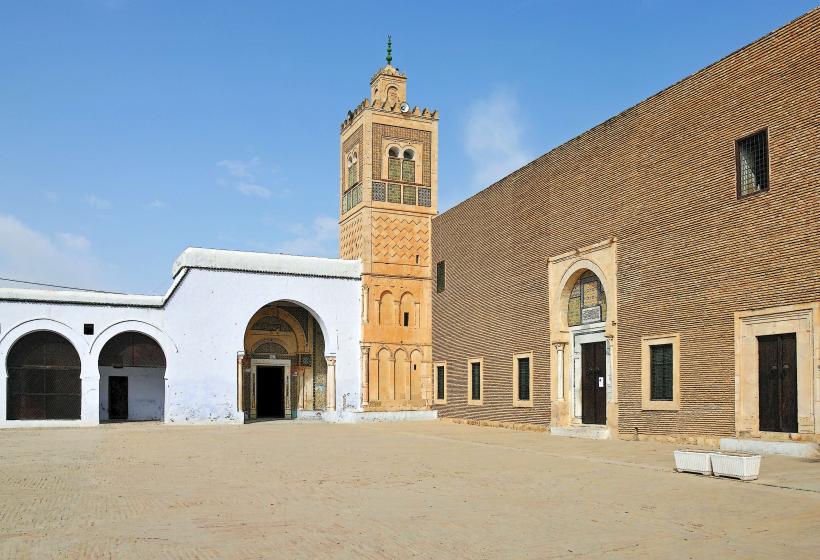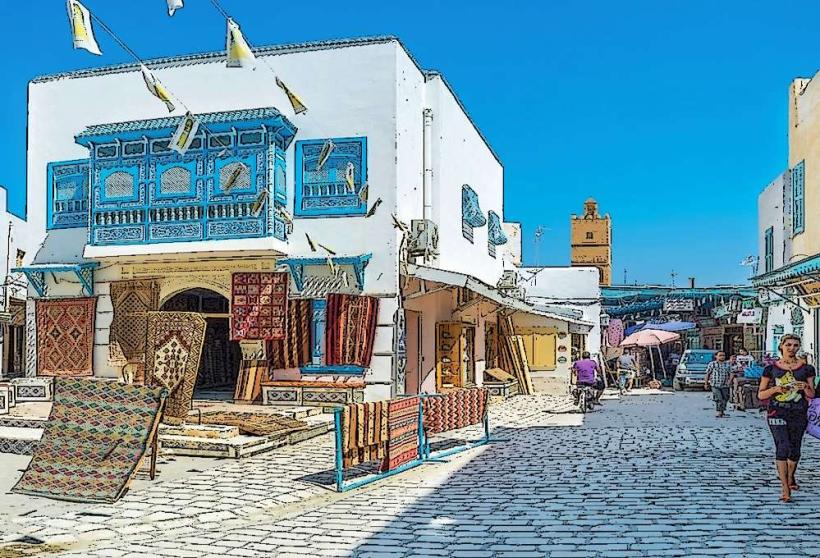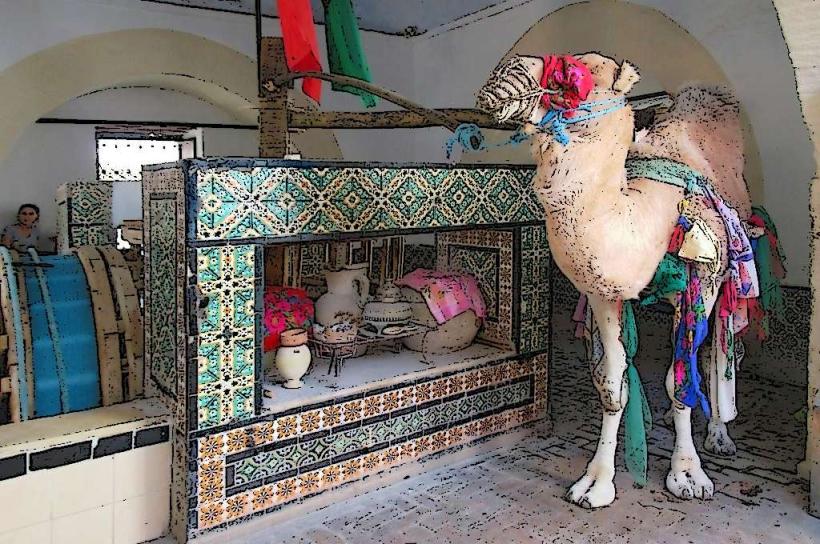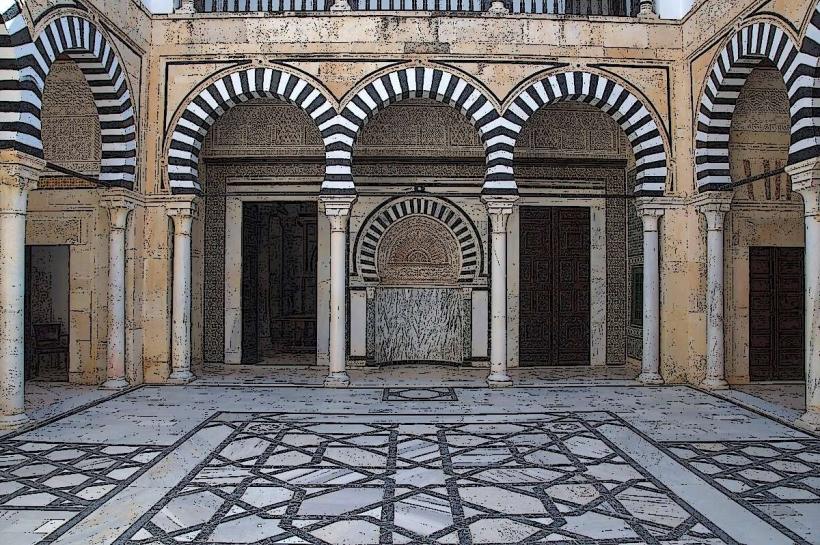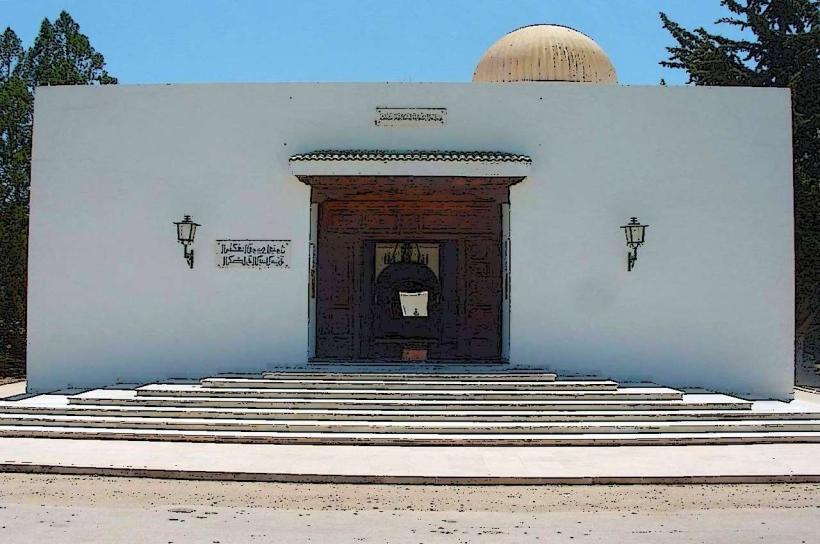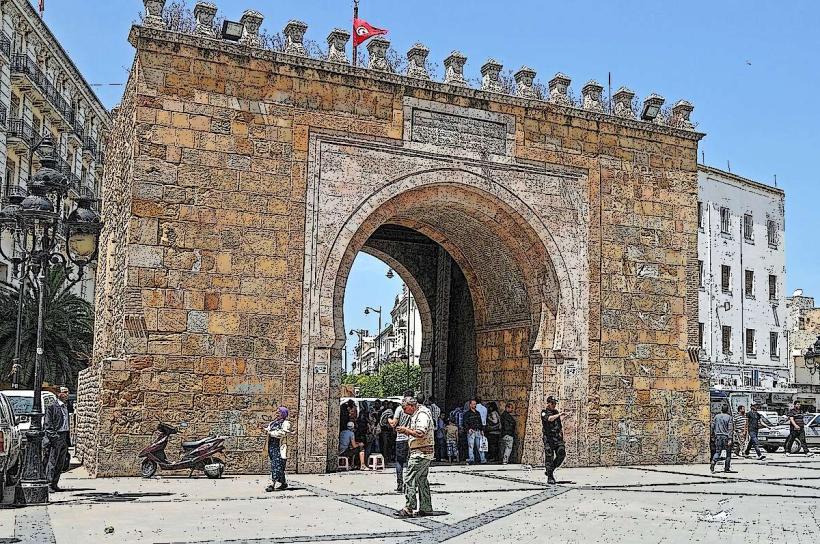Information
City: KairouanCountry: Tunisia
Continent: Africa
Kairouan, Tunisia, Africa
Overview
Kairouan sits in Tunisia’s heartland, inland and central, a city steeped in history and rich with spiritual weight, also kairouan is the capital of the Kairouan Governorate and a leading hub of Islamic scholarship and heritage, where the call to prayer echoes through ancient stone streets.Home to roughly 150,000 people, Kairouan ranks as Islam’s fourth holiest city-after Mecca, Medina, and Jerusalem-especially in the traditions of North and West Africa, where its whitewashed walls brighten under the desert sun, after that kairouan sprang to life in 670 CE, founded by the Arab general Uqba ibn Nafi as the early waves of Islamic expansion swept into North Africa, where dust rose behind his riders’ hooves, in some ways They built it as a military garrison town to tighten Islamic control, a setting where soldiers could regroup and plan the next march under the dry, glaring sun, besides over the centuries, it grew into a vibrant hub of Islamic scholarship, law, and spiritual life, especially in the 9th century when the Aghlabids declared it the capital of Ifriqiya-an area spanning present-day eastern Algeria, Tunisia, and western Libya, where the call to prayer echoed through its bustling streets.It seems, After coastal hubs like Tunis and Mahdia flourished, Kairouan lost much of its political clout, yet its white domes still stood as a beacon of faith and culture, furthermore in 1988, UNESCO named its historic and sacred heart a World Heritage Site, honoring centuries of tradition and stone worn smooth by countless footsteps.Kairouan sits on a semi‑arid plain, where rain is scarce and rows of olive trees stretch toward the edge of its farmland, what’s more urban Structure: The city follows a classic Islamic design, with the ancient Medina enclosed by sturdy walls, its maze of narrow alleys leading past madrasas, bustling markets, and quiet homes.Beyond the heritage medina, the modern city stretches out with government offices, quiet neighborhoods, and busy shops where voices mingle with the scent of fresh bread, alternatively kairouan’s economy weaves together traditional crafts, bustling local markets, and religious tourism, with pilgrimages drawing Muslims from North and West Africa to its sunlit courtyards and sacred mosques.Believe it or not, For many, making seven trips to Kairouan feels the same as completing one pilgrimage to Mecca, as if each journey adds another bead to the string, in addition crafts and Carpets: The city’s known for its handmade carpets, soft underfoot and woven with intricate patterns, among the finest you’ll find in Tunisia.Many people make their living by weaving carpets, their fingers moving swiftly over thick, colorful threads, meanwhile in the medina, traditional souks bustle with life, their stalls piled high with spices, dazzling fabrics, soft leather bags, and everyday household wares.Agriculture: Farms around the city grow olives, grains, and dates, and in town you’ll find petite plants turning them into bottled oil and packaged goods, furthermore education and Culture – Islamic Scholarship: For centuries, Kairouan bustled with renowned Maliki scholars and lively religious schools, shaping the spread of Islamic learning across North Africa.Arabic is the main language, while French shows up in offices and classrooms, in addition local dialects carry turns of phrase shaped by the city’s long scholarly past, like a proverb whispered in an heritage library’s shadow.Cultural events often fill the air with traditional music, the cadence of poetry, and lively festivals-many tied to religious holidays-each echoing customs that run deep, after that architecture and Urban Style Religious Buildings: In Kairouan, faith shapes the skyline-homes and public halls stand in plain stone, with bare façades and only the simplest carved lintel to mark a doorway.To be honest, Traditional homes often open onto an inner courtyard, where patterned zellige tiles catch the light, equally important city Layout: The medina twists through narrow lanes, built to keep doorways hidden and walls cool in the midday sun-a hallmark of early Islamic city design.Daily Life Conservative Values: The city leans more traditional, with prayers echoing from its mosques far more often than in Tunisia’s bustling coastal towns, after that clothing, traditions, and everyday manners often echo Islamic norms, from modest robes to courteous greetings.Honestly, Daily life revolves around bustling markets, the quiet pause of prayer, warm family gatherings, and the chatter spilling from slight neighborhood cafés, subsequently local favorites range from couscous topped with tender lamb or chicken to steaming bowls of lablabi, a hearty chickpea stew, and end with sticky-sweet makroud, golden semolina pastries stuffed with dates.Infrastructure and transport services include a road link to Tunis, roughly an hour’s drive past olive groves.160 kilometers to the northeast lies Sfax, where the air smells faintly of the sea, furthermore daily commuters and visitors can hop on rail lines or catch regional buses rumbling through town, partially To be honest, Health and Education: The city offers hospitals, miniature neighborhood clinics, and schools, plus a few higher education facilities-though nothing on the scale you’d find in Tunis or Sfax, in conjunction with urban growth has pushed beyond the medina, bringing sleek apartment blocks, government offices, and bustling malls, while the historic city’s narrow alleys and weathered walls stay carefully preserved, not entirely Semi-arid climate-scorching summers that climb past 35°C (95°F) and mild winters where the air feels crisp at dawn, after that rain is scarce, falling mostly from October to March, often in brief, cool bursts.Water conservation was vital to the city’s survival in its dry, sunbaked climate, with ancient stone cisterns and clever water systems storing every precious drop, equally important kairouan’s sense of self springs from its deep spiritual heart, shaped by centuries of prayer echoing through its ancient mosques.Many residents speak with pride about this heritage, their voices warm like the smell of bread from the ancient village bakery, therefore even with contemporary buildings rising and sleek shops opening, you still glimpse traditional dress in the streets, hear the measured cadence of religious scholars at study, and watch artisans craft goods by hand, more or less Resilience: Set well inland, the city has been spared the waves of foreign invasions that battered coastal towns, letting its local culture endure-like the scent of fresh bread from a family bakery unchanged for generations, therefore kairouan isn’t just a city-it’s a spiritual heart and a historic cornerstone of Tunisia and North Africa, where the call to prayer drifts through centuries-timeworn streets.It blends the quiet streets of a devout little town with the depth of ancient learning, the touch of skilled hands on carved wood, and a steady thread of tradition that’s never broken, and it may be quieter than the bustling coastal cities, but it still stands as a vital emblem of Tunisia’s Islamic and Maghrebi heritage, its sandstone minaret catching the late afternoon sun.
Author: Tourist Landmarks
Date: 2025-10-29
Landmarks in kairouan

